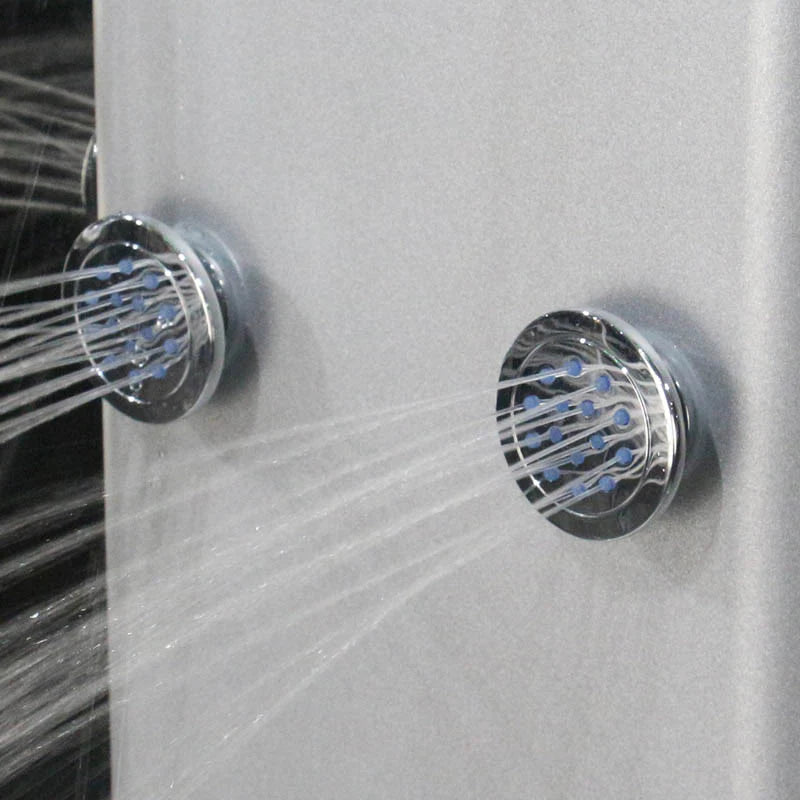Ever tried turning your bathroom into a mini Steam room to help your baby breathe easier? You’re not alone! Short answer: Yes, a gentle Steam bath can soothe babies—if done safely. Curious how to avoid soggy disasters or steamy slip-ups? Keep reading for baby-safe steam tips!

Understanding Steam Therapy for Babies
What is Steam Therapy for Babies?
Steam therapy involves using warm, moist air to ease breathing. For babies, it’s a gentle method to help clear blocked noses or loosen mucus. Unlike adult steam rooms or saunas, this is done passively—never placing the baby in direct steam or hot water.
Distinguishing between Steam Showers and Bathroom Steam
A steam shower is an enclosed, purpose-built unit for adults. For babies, the safer approach is creating steam in a regular bathroom. This involves running a hot shower and sitting outside the cubicle with your baby, letting the warm mist fill the room gently.
Purpose of Steam for Infant Congestion and Cough
Steam can help soften and clear mucus, making it easier for babies to breathe. It may reduce coughing by moistening dry airways. Though not a cure, it offers temporary relief—especially when a baby is too young for medications.
Potential Benefits of Steam for Your Baby
Loosening Mucus and Clearing Airways
Warm steam can thin mucus, helping babies breathe more freely. This can ease noisy breathing and reduce irritation caused by nasal congestion.
Providing Relief for Stuffy Noses and Coughs
A steamy bathroom acts like a natural humidifier. It gently moistens dry nasal passages, which may soothe coughing and help babies sleep more comfortably.
Soothing and Calming Effects for Congested Infants
The combination of warm mist, cuddles, and a quiet space can calm a restless baby. Steam sessions often become a comforting bedtime ritual for families.
Safety First: Crucial Precautions for Steaming Your Baby
Essential Safety Guidelines for Steam Exposure
Never Place Baby Directly in Hot Water or Under Hot Steam
Direct exposure to hot steam or water is dangerous. Babies have delicate skin and immature heat regulation. Always remain outside the shower area.
Maintaining a Safe Distance from Heat Sources (Shower/Humidifier)
Sit on a closed toilet or chair at a distance from the showerhead. If using a humidifier, place it well out of reach and never near the cot.
Monitoring Room Temperature and Baby's Comfort
Keep the room warm but not sweltering. A slight fog on the mirror is enough. Overheating or sweating means it’s too hot for your baby.
Duration of Steam Sessions (e.g., 10–15 minutes)
Limit sessions to 10–15 minutes max. Too long in steam can dehydrate or overheat your baby.
Supervising Your Baby Continuously
Never leave your baby alone during a steam session. Keep them in your arms or on your lap for full supervision.
Risks and What to Avoid
Scalds and Burns: The Primary Danger
Hot steam and water can cause burns quickly. Always test water temperature yourself. Baby skin is far more sensitive than adult skin.
Why Hot Water Vapourisers Are Not Recommended
Hot vapourisers pose burn risks from boiling water or accidental spills. Cool-mist options are far safer for infants.
Avoiding Essential Oils or Additives in Steam for Babies
Avoid eucalyptus or menthol oils in the steam. These are too strong for young lungs and may cause irritation.
Medications and Vap-O-Rubs Not Recommended for Infants
Products like mentholated rubs or steam additives should be avoided for babies under 2 years old unless advised by a doctor.
When to Consult a Paediatrician
Persistent or Worsening Symptoms
If congestion or coughing lasts beyond a few days or gets worse, always contact your GP.
Difficulty Breathing, Wheezing, or High Fever
Laboured breathing, wheezing, or any sign of distress should prompt an urgent visit to a healthcare professional.
Babies Under a Certain Age (e.g., consult for very young infants)
For babies under 3 months, always consult your doctor before trying any steam therapy—even in a bathroom setting.
Practical Methods for Administering Steam at Home

Creating a Steamy Bathroom Environment
Running a Hot Shower to Build Steam
Turn on the hot shower, close doors and windows, and let steam fill the room. Don’t put baby in the shower—just create the steamy environment.
Sitting with Your Baby in the Steamy Bathroom (Outside the Shower)
Sit with your baby in your arms on a chair or toilet lid. Remain calm, talk softly, or sing—it adds to the soothing effect.
Ensuring Proper Ventilation After the Session
After the session, open windows or doors to let out the steam. This keeps your home safe from mould or mildew buildup.
Using Humidifiers for Baby Congestion
Cool-Mist Humidifiers: The Preferred Choice
These are the safest and most recommended option for easing baby congestion during sleep or playtime.
Proper Placement of Humidifiers in Baby's Room
Place the unit on a shelf or surface out of reach and at least 1 metre from your baby’s cot.
Regular Cleaning and Maintenance of Humidifiers
Clean the unit every 1–3 days to prevent mould or bacteria. Follow the manufacturer’s instructions carefully.
Using Distilled Water in Humidifiers
Use distilled water to avoid mineral buildup and ensure cleaner mist for baby’s lungs.
Other Complementary Home Remedies for Infant Congestion
Nasal Saline Drops and Suctioning
Saline drops can help loosen mucus before using a suction bulb or nasal aspirator. Always be gentle and use as directed.
Ensuring Adequate Hydration (Breastmilk/Formula)
Keep baby well-hydrated. Fluids help thin mucus naturally and support overall recovery.
Elevating Baby's Head Slightly During Sleep (if safe and recommended by paediatrician)
With professional guidance, a slight tilt in sleep position can aid breathing. Never prop your baby up without medical advice.
Takeaways
-
Steam showers aren’t for babies—but steamy bathrooms can help with congestion.
-
Always keep baby out of direct heat and supervise throughout.
-
Use cool-mist humidifiers as a safer alternative.
-
Avoid essential oils, medicated rubs, and hot vapourisers.
-
When in doubt, ring your GP—especially for young or vulnerable infants.






